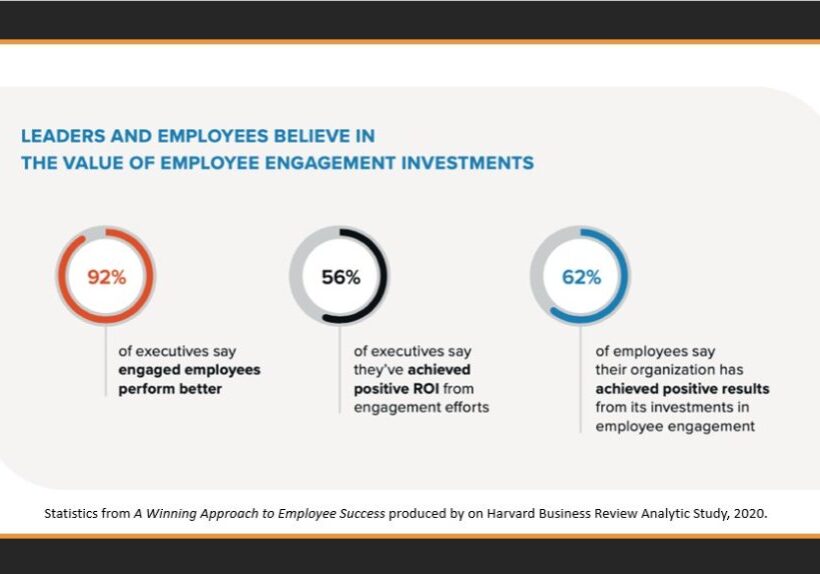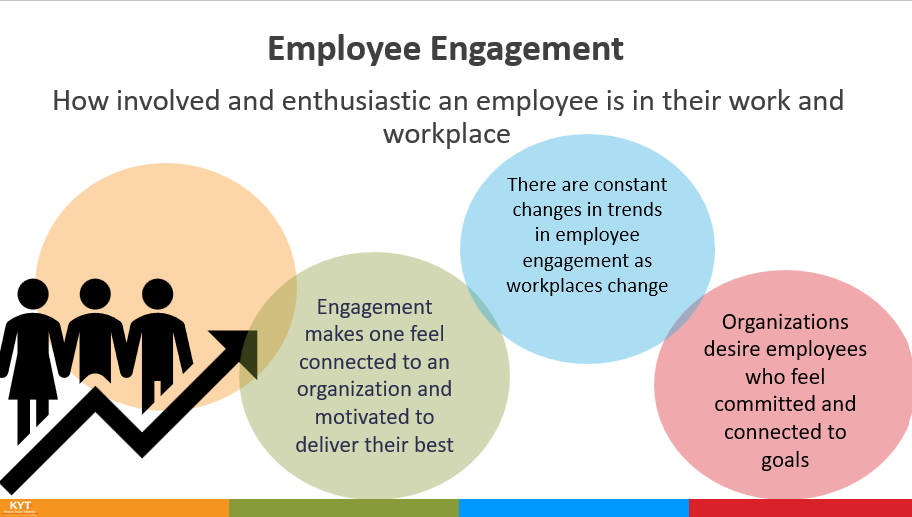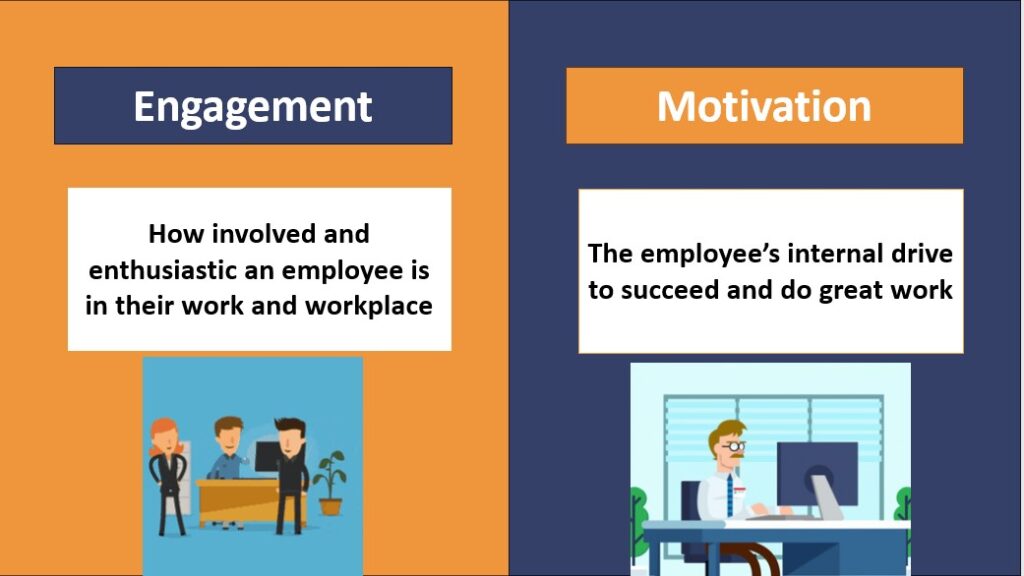
With the “Great Resignation,” followed by “Quiet Quitting,” and even “Loud Quitting,” it’s no surprise that one of the most important conversations companies are having is about employee engagement. Whether referring to their employees’ engagement or what initiatives the organization will drive to improve employee engagement, this issue is on everyone’s radar.
In this article, we will look at what exactly employee engagement is, why it is essential, and how it differs from but relates to employee motivation. We will also review the 2023 trends in employee engagement, allowing readers to assess their approach to engaging employees compared to the trends. Finally, we will offer some recommendations for improving employee engagement.
At Know Your Talents (KYT), we spend a great deal of time and resources to become experts on employee engagement and how to improve it. Our research defines employee engagement as: How involved and enthusiastic an employee is in their work and workplace.

According to Gallup’s State of the Global Workplace: 2023 Report , “employees who are thriving at work (fully engaged) find their work meaningful and feel connected to the team and their organization.”
Employee involvement and enthusiasm stem from feeling connected to an organization and inspired to bring one’s best effort to work! Being engaged as an employee means I find my work meaningful, I feel committed to my company’s goals, and my goals and contributions align with my company’s.
Why is Employee Engagement so Important?
“Employee engagement and employee success go hand-in-hand. After all, it’s not policies or budgets that help businesses remain stable during turbulent times – it’s people.”
The Quantum Workplace 2023 report explains, “Leaders consistently cite their biggest business goals related to employee engagement as improved productivity, employee retention, and customer satisfaction. These can all be accomplished when leaders invest in employee engagement strategies.”
There is no argument that productivity, retention, and happy customers are critical to a business’s bottom line. That’s why top business leaders continue to invest in employee engagement programs, such as leadership development, behavioral awareness, team building, strategic planning, and employee surveys. A dynamic performance management program can also serve as an employee engagement tool! When done correctly, a strong performance management process promotes employee engagement. By ensuring that your employees have clear expectations, give and receive regular feedback, and feel supported by their leadership, your organization will better manage performance and increase employee satisfaction and engagement.

Employee Engagement vs. Motivation
Although often used interchangeably, employee engagement is not the same as employee motivation. An employee’s inner drive to succeed and do great work is their motivation, which can be intrinsic, extrinsic, or both. Intrinsic motivation includes the desire to do a good job, make a difference in the world, and the need to have purpose and meaning. These motivators come with a person and tend to be more long-lasting, yet leaders can tap into them by providing employees opportunities to do their best work in roles that feel meaningful to them. Employers can impact extrinsic motivation by giving specific incentives for top performance, such as pay increases, bonuses, promotions, rewards, and recognition. Although both types of motivators are important, intrinsic motivators tend to be longer-lasting. Extrinsic motivators provide short-term incentives that need to be revisited or provided repeatedly.
Organizations must pay attention to both employee engagement and motivation. This task requires leadership to know what motivates individuals and keeps them involved and enthusiastic about their daily work. Part of the behavioral work we do at KYT includes regular “motivation reviews” with team members. These reviews allow leadership to be aware of what motivates each person, to assess how well these motivators are met in their current roles, and to adjust accordingly, if necessary.
2023 Top Trends in Employee Engagement
While motivation is unique to the individual, employee engagement tends to be universal, making it possible to identify trends and practices that enhance it. The 2023 Quantum Workplace Employee Engagement report identified six top trends affecting employee engagement.
1. Rebuilding trust in leadership
Bridging the growing trust gap between leaders and employees
2. Investing in employee engagement
Prioritizing investments in employee engagement and employee experience
3. Inspiring employee impact
Shifting from managing performance to inspiring employee impact
4. Building a thriving culture
Creating a thriving and adaptable culture
5. Strengthening organizational magnetism
Building a magnetic organization that attracts and retains top talent
6. Leveraging flexibility
Leveraging flexibility to fuel organizational success
How is your organization doing in terms of these six trends?
- What tools and methods are you using to rebuild trust in your organization?
- What investments are you continuing to make in employee engagement programs?
- How does your performance management process inspire your employees and provide support and accountability for them to do their best?
- What makes your company culture thriving and adaptable?
- How magnetic is your organization? Are you attracting top talent from this multi-generational workforce?
- What areas of flexibility are you leveraging to increase your organization’s success?
Organizations invest in their future success and growth by implementing programs to enhance employee engagement. There are numerous ways this can be done, such as offering leadership development opportunities for existing and emerging leaders, providing ongoing professional development, and upskilling programs, implementing a behavioral awareness program into every phase of the employee life cycle, working to build and rebuild trust among colleagues and leadership, and by surveying employees to let them know their voice is heard and counts.
The four pillars of Know Your Talents–f Know Me, Grow Me, Include Me, and Inspire Me provide all the resources and support needed to build employee engagement, enhance culture, and optimize performance at every level. If your organization is interested in learning more about what KYT can do for you, we would love to meet with you and discover how we can help.


